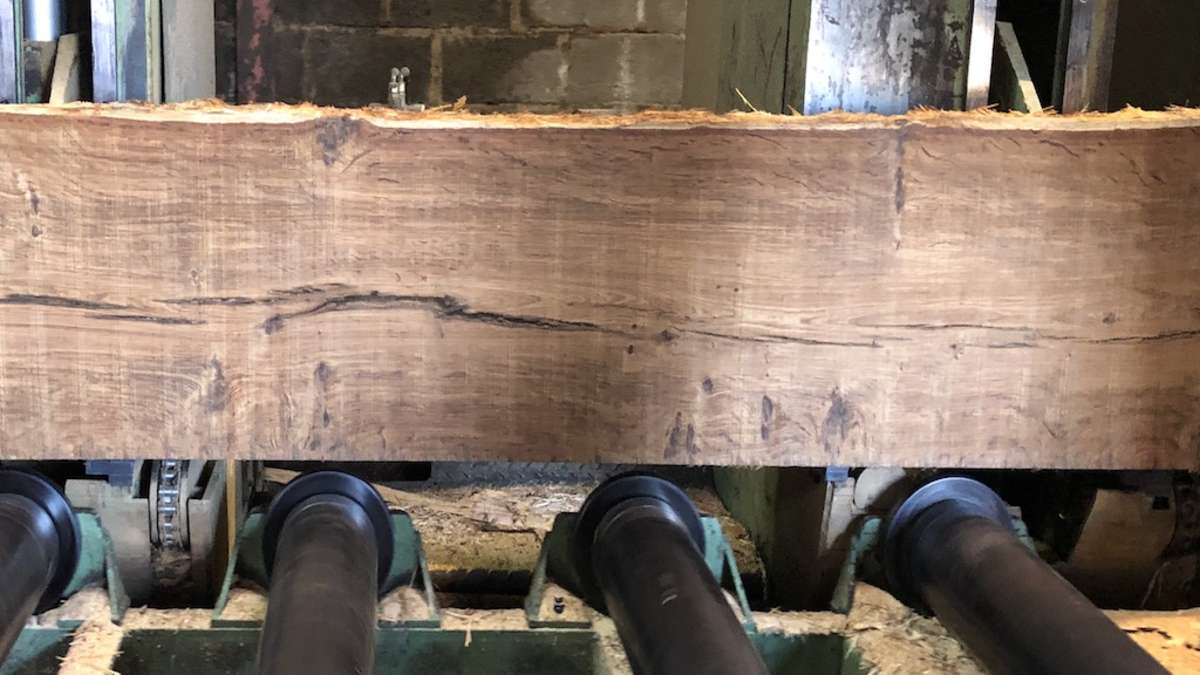
English Brown oak is unique to British woodlands and is caused by a fungus, Fistulina Hepatica, commonly known as Beefsteak Fungus . Appearing as a beautiful red bracket on the trunk it can be up to 25cm across and 6cm thick. The fungus attacks the roots of the tree, causing the wood to turn a chocolate brown. Often streaks appear rising up from the base of the tree and tapering out further along the trunk. In contrast European Brown oak which found in European forests is very different and takes on more of a pinkish tone.
You would think the mere mention of the word fungus would have a detrimental effect on the timber however this is not the case. The decaying effects of the fungus desist after the tree is felled and the timber dried.
In most cases at least half of each board will be either solid chocolate brown or streaky, with the remainder being the normal oak colour. Boards which are solid brown from end to end are very rare and consequently in great demand. It can be prone to surface splits especially the boards nearer to the centre of the log however any excessive splitting is measured out before sale.
The more pronounced grain is generally darker and radiates out from the centre of the board to the outside edge as shown in the images of these freshly sawn boards below.
Often silver medullary rays are displayed on the quarter sawn boards and these provide a stunning contrast to the brown colour. English Brown Oak can be very rare and is extremely beautiful and much sought after by furniture makers and joiners alike.

